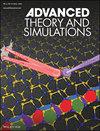Anisotropic Surface Microrollers for Endovascular Navigation: A Computational Analysis with a Case Study in Hepatic Perfusion
IF 2.9
4区 工程技术
Q1 MULTIDISCIPLINARY SCIENCES
引用次数: 0
Abstract
Magnetic surface microrollers have demonstrated promise as active drug delivery agents for targeted and minimally invasive disease treatment. Specifically, it can be employed in the circulatory system to locally release therapeutic agents at disease sites, minimizing systemic exposure and reducing side effects, particularly in the treatment of diseases like cancer. Previous research indicates that the design and shape of microrollers play a crucial role in safe navigation within blood vessels, with anisotropic microrollers exhibiting superiority due to favorable hydrodynamic interactions with nearby boundaries. In this study, the navigation potential of anisotropic microrollers is investigated in veins, venules, and capillaries through computational fluid dynamics analyses. These results indicate that robust locomotion is only achievable in larger vessels, such as veins. Subsequently, their performance is explored in a clinically relevant scenario – the hepatic circulation toward treating primary liver cancer or metastatic nodes of distant tumors (e.g., pancreatic cancer). Computational fluid dynamics analyses using the data from five different patients demonstrate that robust navigation can be achieved with high actuation frequencies. Overall, the findings presented in this study lay a preliminary foundation for the potential future application of surface microrollers in vivo.

各向异性表面微滚轴用于血管内导航:以肝脏灌注为例的计算分析
磁性表面微辊已被证明有望作为靶向和微创疾病治疗的活性药物递送剂。具体来说,它可以用于循环系统,在疾病部位局部释放治疗剂,最大限度地减少全身暴露并减少副作用,特别是在治疗癌症等疾病时。先前的研究表明,微辊的设计和形状对血管内的安全航行起着至关重要的作用,各向异性微辊由于与附近边界的良好流体动力相互作用而表现出优势。本研究通过计算流体动力学分析,研究了各向异性微滚子在静脉、小静脉和毛细血管中的导航势。这些结果表明,稳健的运动只能在较大的血管中实现,如静脉。随后,在临床相关场景中探讨了它们的性能-肝循环治疗原发性肝癌或远处肿瘤转移淋巴结(如胰腺癌)。利用5例不同患者的数据进行的计算流体动力学分析表明,高驱动频率可以实现鲁棒导航。总的来说,本研究的发现为表面微辊在体内的潜在应用奠定了初步的基础。
本文章由计算机程序翻译,如有差异,请以英文原文为准。
求助全文
约1分钟内获得全文
求助全文
来源期刊

Advanced Theory and Simulations
Multidisciplinary-Multidisciplinary
CiteScore
5.50
自引率
3.00%
发文量
221
期刊介绍:
Advanced Theory and Simulations is an interdisciplinary, international, English-language journal that publishes high-quality scientific results focusing on the development and application of theoretical methods, modeling and simulation approaches in all natural science and medicine areas, including:
materials, chemistry, condensed matter physics
engineering, energy
life science, biology, medicine
atmospheric/environmental science, climate science
planetary science, astronomy, cosmology
method development, numerical methods, statistics
 求助内容:
求助内容: 应助结果提醒方式:
应助结果提醒方式:


